Palatki Sinagua Ruins, Sedona, Arizona
Travels & Tours
Pictures, Photos, Images, & Reviews.
September 23, 2009

September 23, 2009

Google Map To Palatki Sinagua Ruins, Sedona, Arizona.
View Larger Map

Click On Any Of The Following Links By Amazon.Com
For Books, & Videos About Touring Arizona. No Obligation!
Click On Any Of The Following Links By Amazon.Com
For Books, & Videos About About Arizona Native American Ruins. No Obligation!

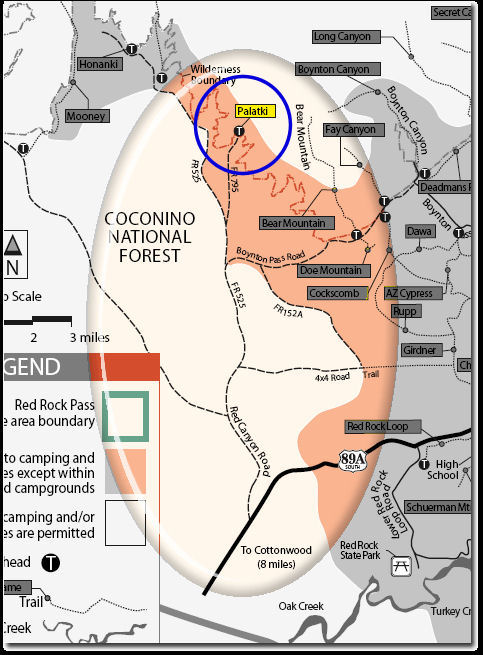
Forest Service Map To
Palatki Sinagua Ruins, Sedona, Arizona.
Courtesy U.S. Forest Service.
Coconino National Forest. Red Rock District.
For Books, & Videos About About Arizona Native American Ruins. No Obligation!

 |
| Forest Service Map To Palatki Sinagua Ruins, Sedona, Arizona. Courtesy U.S. Forest Service. Coconino National Forest. Red Rock District. |
|---|

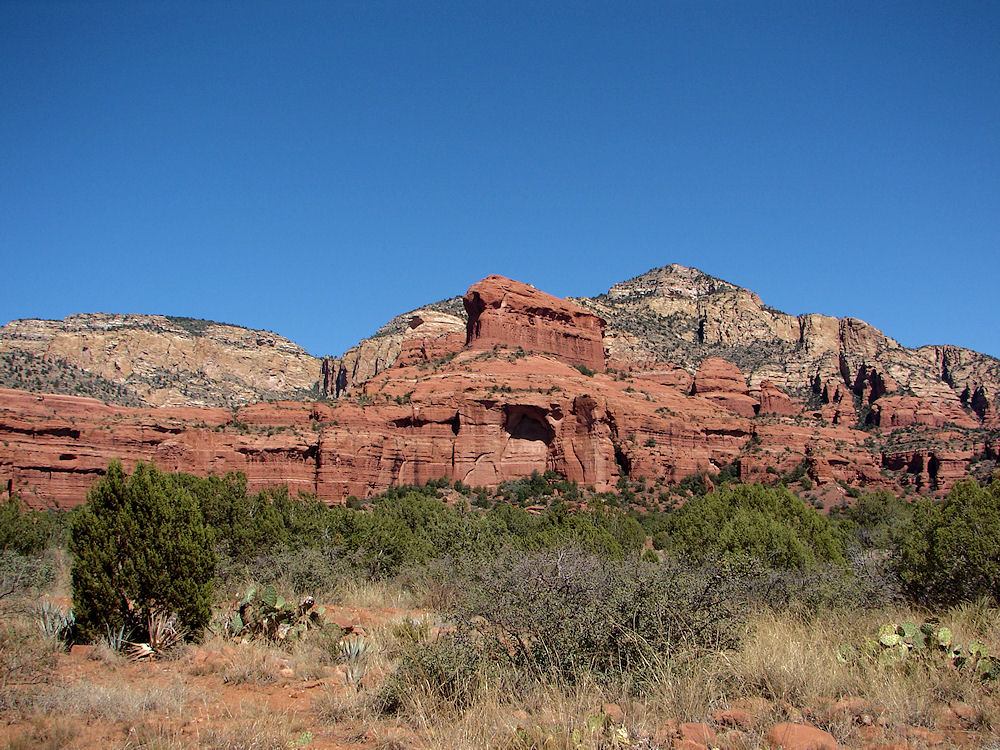 |
| The "Red Canyon" Cliffs Of The Palatki Sinagua Cliff Dwelling Ruins, Sedona, Arizona. Photos Taken September 23, 2009. |
|---|
 |
| The Palatki Sinagua Cliff Dwelling Ruins Are Under The "Red Canyon" Cliffs And Hidden By The Trees On The Left Of The Trail. Sedona, Arizona. Photos Taken September 23, 2009. |
 | 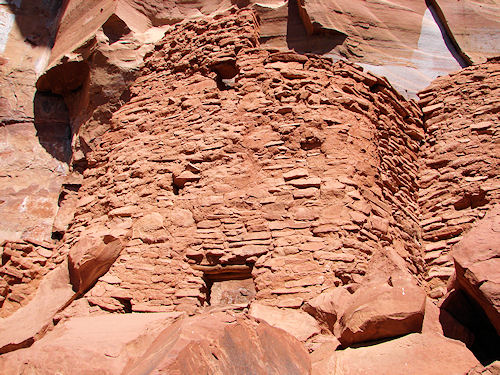 |
| Palatki Heritage Site Ancient Sinagua Cliff Dwelling Ruins Sedona, Arizona. | Palatki Heritage Site Ancient Sinagua Cliff Dwelling Ruins Sedona, Arizona. |
|---|
 |  |
| Palatki Heritage Site Ancient Sinagua Cliff Dwelling Ruins Sedona, Arizona. | Palatki Heritage Site Ancient Sinagua Cliff Dwelling Ruins Sedona, Arizona. |
|---|---|
| Palatki Heritage Site Ancient Sinagua Cliff Dwelling Ruins Sedona, Arizona. | Palatki Heritage Site Ancient Sinagua Cliff Dwelling Ruins Sedona, Arizona. |
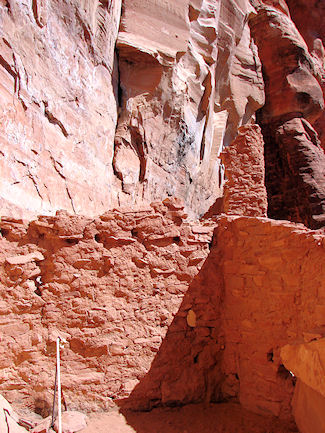 | 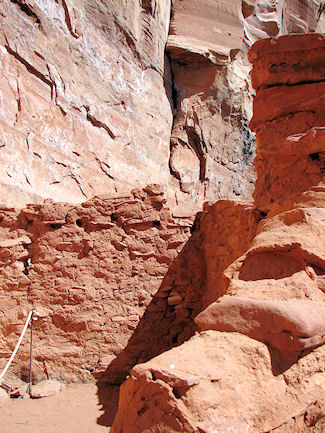 |
| Palatki Heritage Site Ancient Sinagua Cliff Dwelling Ruins Sedona, Arizona. | Palatki Heritage Site Ancient Sinagua Cliff Dwelling Ruins Sedona, Arizona. |
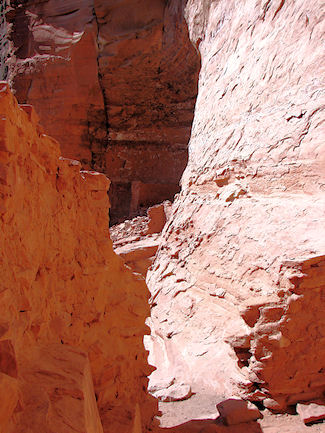 | 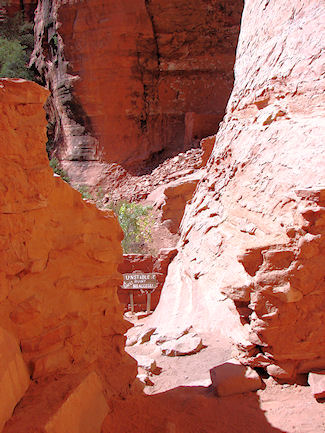 |
| Palatki Heritage Site Ancient Sinagua Cliff Dwelling Ruins Sedona, Arizona. | Palatki Heritage Site Ancient Sinagua Cliff Dwelling Ruins Sedona, Arizona. |
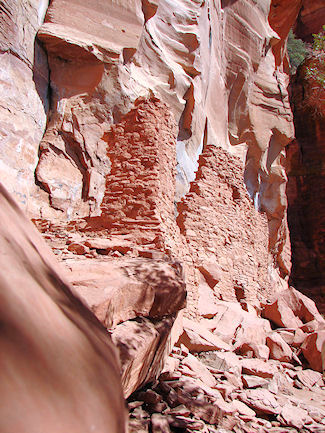 | 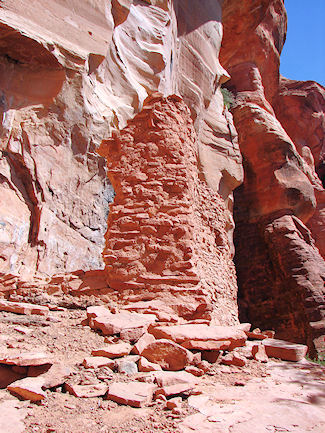 |
| Palatki Heritage Site Ancient Sinagua Cliff Dwelling Ruins Sedona, Arizona. | Palatki Heritage Site Ancient Sinagua Cliff Dwelling Ruins Sedona, Arizona. |
Palatki Heritage Site is a cliff dwelling and rock art site; located near the town of Sedona, in north-central Arizona. Palatki was one of the largest cliff dwellings in the Red Rock country; occupied between A.D.1150 - 1300. Reservations are recommended: Call Palatki at (928) 282-3854 between 9:30 a.m. and 3:00 p.m. to make a reservation. Palatki has a small visitor center and bookstore at the site; operated by the Arizona Natural History Association. A Google Earth Map search marks the east corner of the Visitor Center at the Palatki Heritage Site at about: 34o 54' 58.25" N 111o 54' 06.23" W. The visitor center is at about 4,723 feet elevation.
The Sinagua (seen-ah-gwa): The Sinagua are the best known regional group that anthropologists refer to as the Western Anasazi. The Sinagua occupied an area between Flagstaff and Phoenix, Arizona, including the Verde Valley and significant portions of the Mogollon Rim country, between about 500 and about 1,425 AD. They led a simple life based on corn farming and subsistence hunting and gathering at the periphery of the three major Southwest cultures. After volcanic activity improved soil conditions around 1,000 AD, the Sinagua began to thrive by assimilating various elements from the major cultural groups. From the Hohokam they acquired village life and the use of ball courts; from the Anasazi they adopted cliff dwellings and water conservation practices; from the Mogollon they adopted pottery styles. By the late 1,450s, the same natural and social stresses that destroyed the other cultures of the region engulfed the Sinagua as well. By about 1,425, they had completely disappeared. But, their dwellings and religious shrines can be found all over Central Arizona. One is even located in a city park in the city of Phoenix! The early Sinagua sites consist of pit houses. Their later structures more closely resembled the pueblo architecture found in other cultures throughout the southwestern United States. The name Sinagua was given to this culture by archaeologist Harold Colton, founder of the Museum of Northern Arizona. Sinagua is derived from the Spanish words "sin" meaning "without" and "agua" meaning "water", referring to the name "Sierra Sin Agua" which was originally given by the Spanish explorers to the San Francisco Peaks near Flagstaff, Arizona. Colton also distinguished between two different Sinagua cultures. The Northern Sinagua were clustered around the Flagstaff area, with Elden Pueblo, Walnut Canyon National Monument, Wupatki National Monument, being the best-known publicly-accessible sites. The Southern Sinagua were found throughout the Verde Valley of Central Arizona. Most notable sites open to the public being; Montezuma's Castle, Montezuma's Well, Tuzigoot National Monument, the Palatki Archaeological Site, and the V-Bar-V Petroglyph Site. The last known recording of Sinagua occupations for any of the Sinagua sites are of those in Montezuma Castle National Monument in about 1,425 AD. The reasons for the abandonment of their habitation sites are not yet known; but warfare, drought, and clashes with the newly-arrived Yavapai people are possible suggestions. Several of the Hopi clans trace their roots to immigrants from the Sinagua culture. The Hopi clans believe their ancestors left the Verde Valley for religious reasons. Palatki Heritage Site & The Sinagua: The Sinagua Native American's, built cliff dwellings under the overhangs of the cliff walls. The dwellings were built into the natural recessed overhangs in the walls of the canyon. This provided a natural roof, sheltering them from the elements. The three side walls were made of up of stacked rocks, the back of the natural recesses acted as the fourth back wall and the rock ledge floor was the cliff dwellings natural floor. Even though some structures were three floors high; the individual dwellings are very small by today's standards, (approximately 6.5 feet high by 19.7 feet long by 9.8 feet deep), but they were large enough for the Sinagua to cook a meal over open flames and to lie down for a night's sleep. They also were easy to keep warm on a cold winter's night. Most of the Sinagua cliff dwellings were built facing south, probably so the sun's rays were cast on their homes during most of the daylight hours to make the winter cold periods more bearable. Archaeologists are fairly sure that the Sinagua of Palatki were skilled farmers that planted, cultivated, and harvested; the corn, beans, and squash that were staple agriculture products of these people. They also collected wild plants, and berries to add to their diet. In addition they hunted the local wild game.
Palatki Heritage Site:
When you visit the site you will actually be able to see the wonderful prehistoric cliff dwellings that are built into the canyon walls as well as the many painted symbols, or pictographs on walls nearby. Palatki and it�s sister site, Honanki were the largest cliff dwellings occupied in Red Rock Country between A.D.1150 - 1300. They were first described by Dr. Jesse Walter Fewkes, famous turn-of-the century archaeologist from the Smithsonian Institution, who gave them the Hopi names of Honanki (Bear House) and Palatki (Red House). There are two easy trails at Palatki; each approximatly � long or 1/2 mile round trip each. Neither is handicap or wheelchair accessible! Vault toilets and water are available. The first trail takes you to the Palatki Sinagua cliff dwellings. While it is rather easy, it does have about 50 difficult steps to climb. The second easier trail takes you to the alcoves that shelter the many painted symbols, or pictographs near Palatki; thought to be left over from every native culture to occupy the Verde Valley. Some dating back 6,000 years, long before the Sinagua of Palatki; and some less than 100 years, from Arizona pioneers in the 1,900's. Palatki consists of two separate pueblos (about 30-50 people of the Southern Sinagua tradition occupied the site), suggesting that two family or kin groups may have lived here, one in each pueblo. In fact, the circular-shield-like pictographs about the eastern Pueblo have been interpreted by some archaeologists as being a kin or clan symbol. The larger eastern unit shows population growth by the addition of the two rooms at its west end. The small room added to the east side was probably a storage room, used in common by all the occupants of the east pueblo. The western unit is smaller and contains what may have been a kiva (a ceremonial room), indicated by the raised bench at one end. Population growth is also suggested by the addition of the second story on top of the juniper bark roof of the original room. It is open to the general public for visits seven days a week (except Thanksgiving, and Christmas). Its hours are from 9:30 AM to 3:00 PM. Reservations are strongly recommended: Call Palatki at (928) 282-3854 between 9:30 a.m. and 3:00 p.m. to make a reservation. Admittance is not usually possible after 2:30 PM. A Red Rock Pass (or equivalent) is required on all vehicles parked at Palatki Heritage Site.
Phone
Be prepared for variable and extreme weather conditions: snow in winter, hot sun in summer with afternoon thunderstorms from Mid June To Mid September. If there has been rain or snow recently, it is recommended that you contact Palatki or the Red Rock Ranger District at (928)-282-4119 to learn the condition of the roads to the Site. If the roads are impassable, Palatki Heritage Site will be closed; signs indicating the closed status will normally be posted at the main access points. Pets are not allowed on the trails, in the backcountry, in buildings, or tied to objects in the area. They are welcome in the parking areas on a leash. Warning: Summer temperatures may be fatal to pets left in vehicles. How To Get There: From Sedona: Take Hwy. 89A through West Sedona and continue past the last traffic light for five miles. Just past mile marker 365, turn right onto Forest Road 525. Go north for 5 miles and when F.R. 525 bears left, continue straight ahead onto Forest Road 795 for two miles. This road will lead directly into the Palatki parking lot. An alternative way to access Palatki it to travel through west Sedona on Hwy. 89A, turn right onto Dry Creek Rd. There are signs at every intersection that will direct you towards Palatki. At the end of Dry Creek Rd, turn left onto Boynton Pass Road (FR 152C). At the next stop sign, turn left again. In a couple of miles, the pavement will end and you should continue on the rough gravel road for three miles until you reach another T intersection where you should turn right. It is 2 miles to Palatki from this intersection. These roads are generally passable to passenger cars when dry, but it is not regularly maintained by the County and has some rough and rocky stretches. From Cottonwood: Take 89A north from Cottonwood. About 1/2 mile north of mile marker 364, turn left onto a dirt road (Forest Road 525 to Forest Road 795; passable for passenger cars when dry), and drive 7 miles to Palatki Heritage Site and the parking lot.
There are many nice ruins in the area of Sedona. Most are near hiking trails. Some are easy to get to. Some are not.
For More Information: Contact the Red Rock Heritage Sites, P.O. Box 20429, Sedona AZ 86341, (928) 282-3854.
|
If you are planning to visit the Prescott or Sedona area to tour Palatki and you are coming from outside of Arizona, you could fly into Phoenix and then rent a car. Prescott, Sedona, & Palatki are a few miles off of the scenic I-17 route between Phoenix and Flagstaff. There are hotels and motels all along the way in nearby towns. We have some links to Priceline.com on this page since they can arrange all of your air flights, hotels and car. You may need some outdoor clothing and equipment, if you plan to visit the Prescott or Sedona area, & Palatki. We have some links to Altrec on this page since they are a good online source for outdoor gear. We of course, appreciate your use of the advertising on our pages, since it helps us to keep this page active.
|
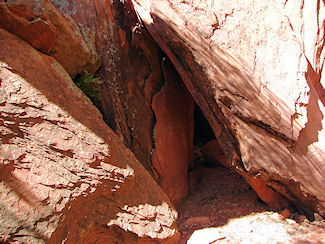 |  |
| Palatki Heritage Site Stepping Stones Up The Trail Ancient Sinagua Cliff Dwelling Ruins Sedona, Arizona. | Palatki Heritage Site Stepping Stones Up The Trail Ancient Sinagua Cliff Dwelling Ruins Sedona, Arizona. |
|---|---|
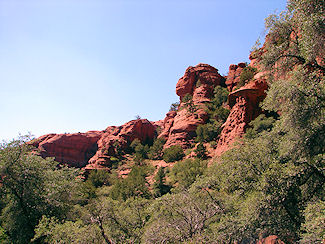 |  |
| Cliffs Near The Palatki Heritage Site Ancient Sinagua Cliff Dwelling Ruins Sedona, Arizona. | Cliffs Near The Palatki Heritage Site Ancient Sinagua Cliff Dwelling Ruins Sedona, Arizona. |

We Are Proud Of Our SafeSurf Rating!

Click On Any Of The Following Links By Amazon.Com
For Books, & Videos About Touring Arizona. No Obligation!
Click On Any Of The Following Links By Amazon.Com
For Books, & Videos About About Arizona Native American Ruins. No Obligation!
| To Nearby Sedona - Camp Verde Arizona Ruins & Attractions:
|
| To V-Bar-V Ranch Heritage Site, Sinagua Petroglyphs.
|
| To Honanki Ancient Sinagua Ruins.
|
| To Sedona & The Red Rock Country.
|
| To Montezuma Well.
|
| To Montezuma Castle.
|
| To Tuzigoot.
|
| To Page Springs Fish Hatchery.
|
| Back To Arizona Tours Page.
|
| Back To DeLange Home Page.
|



